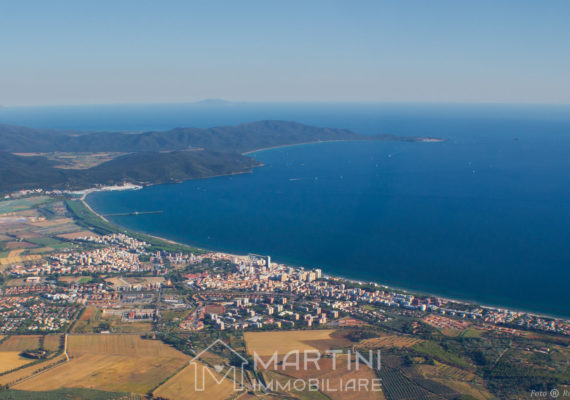The coasts of Tuscany are among the most beautiful in Italy. Right behind one of these, the Gulf of Baratti, stands a true jewel: Populonia.
A place as ancient as it is fascinating, which we recommend everyone to visit calmly, especially during a holiday in one of the Tuscan coastal towns between the Maremma and the Val di Cornia.
Populonia is part of the Archaeological Park of Baratti and Populonia and is a very ancient place, frequented for over 2500 years.
In the beginning it was the Etruscans who inhabited this area, then the Romans. The fortress on the top of the hill shows off its structures built during the medieval era.
During a visit to Populonia you can therefore retrace all the phases of the history of the place. From the Etruscan tombs of 2600 years ago, to the artisan workshops of today.
But let’s go step by step and see how the area is divided:
- Necropolis of St Cerbone
- Necropolis of Le Grotte
- Acropolis of Populonia
- Castle of Populonia
NECROPOLIS OF ST CERBONE
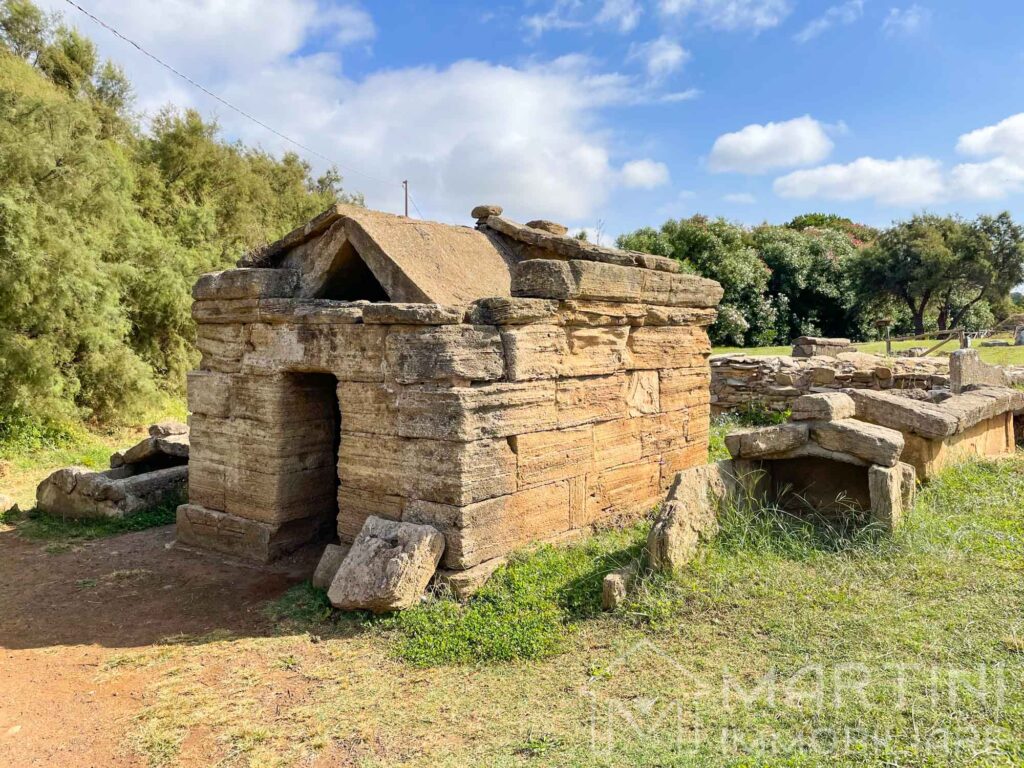
Located in the lower part of the complex, near the beach, it is the area of the oldest Etruscan tombs, dating back to between 2600 and 2400 years ago. In fact, here you can see various types of funerary architecture, such as mound tombs, aedicule tombs and sarcophagus tombs.
Access to many of these tombs is also possible during the guided tour.
The area was discovered only towards the end of the 19th century as it was submerged by ferrous debris, waste from the massive iron processing that characterized the area in the centuries immediately following those of the burials.
NECROPOLIS OF LE GROTTE
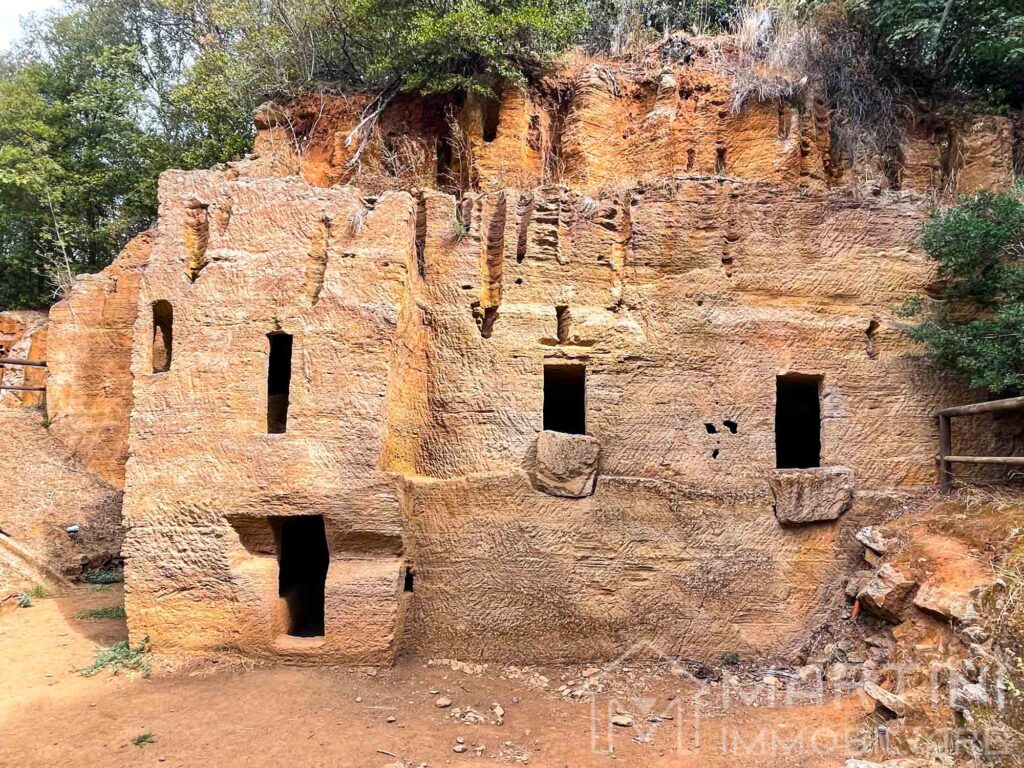
Entering the woods and climbing the hill adjacent to the Necropolis of St Cerbone, we find numerous evidence of ancient work and burials.
Along the streets that wind through the Mediterranean scrub, you can see the “Dromos“, i.e. entrances that enter diagonally into the ground and lead to funerary chambers dug into the rock underground.
In the highest part of the route, there are instead the bench stone quarries, suddenly abandoned and which still incredibly present the appearance they had during the last works.
In front of the quarry there is a complex of tombs dug into the rock, like small caves. The Etruscans were buried here after the area of the San Cerbone necropolis changed its destination from a funerary site to an industrial center for the processing of iron from the Island of Elba.
ACROPOLIS OF POPULONIA
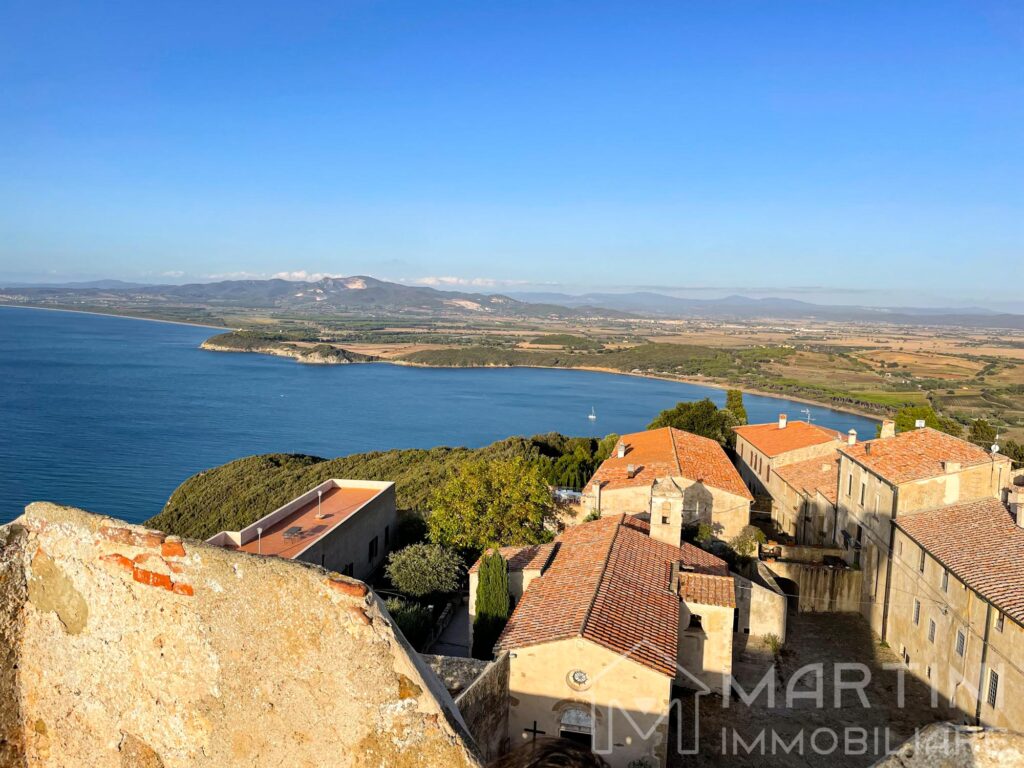
On the top of the hill, the acropolis stands out. Contrary to what happened in the area below, settlements here have followed one another in various eras and the most ancient Etruscan remains were replaced by Roman and then medieval buildings.
Few Etruscan remains remain in the area today, among which the King’s House stands out, but numerous Roman remains, among which we point out the various Roman temples that surrounded the main square and a beautiful mosaic, called Dei Neri, which decorated a ‘apse of the baths. Unmissable spas in a lush Roman town.
CASTLE OF POPULONIA
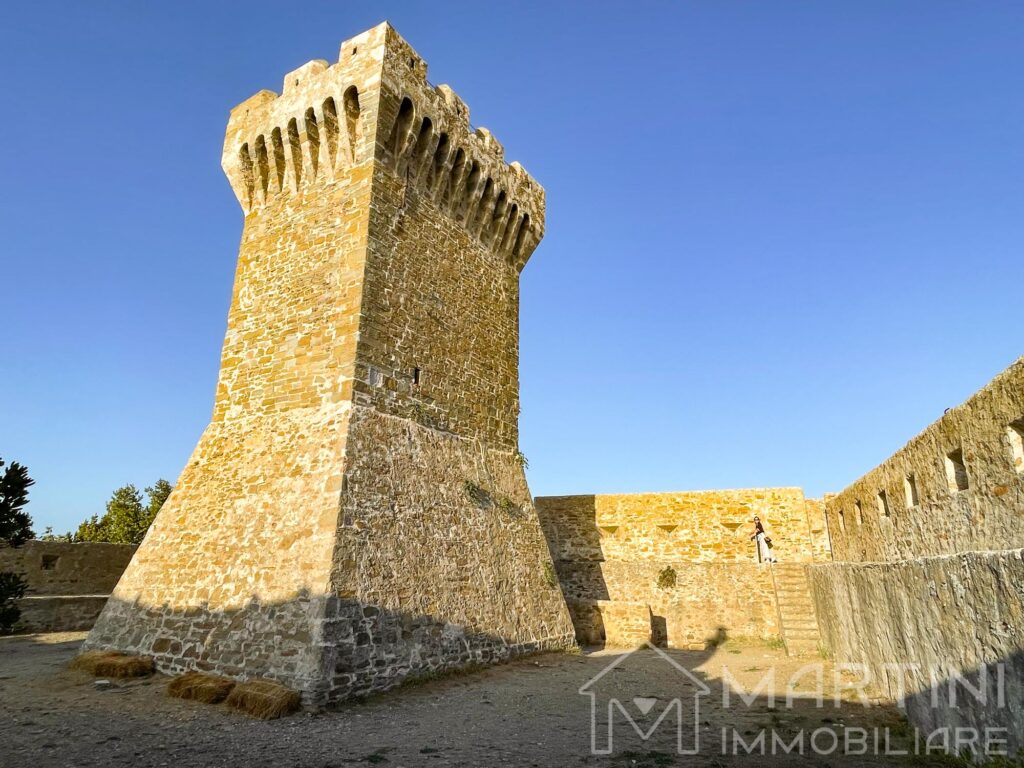
The highest part of the settlement is now occupied by the majestic medieval castle. Built on the ancient Etruscan and Roman remains, it is characterized by a massive fortification and a splendid fortress. Fortress on which it is possible to climb to enjoy a breathtaking panorama that extends from the green hills behind it to the sea of the Gulf of Baratti, with the large Etruscan iron mine visible in the distance: the Island of Elba.
The interior of the castle is well preserved and is full of small and charming artisan shops selling local products of all kinds.


